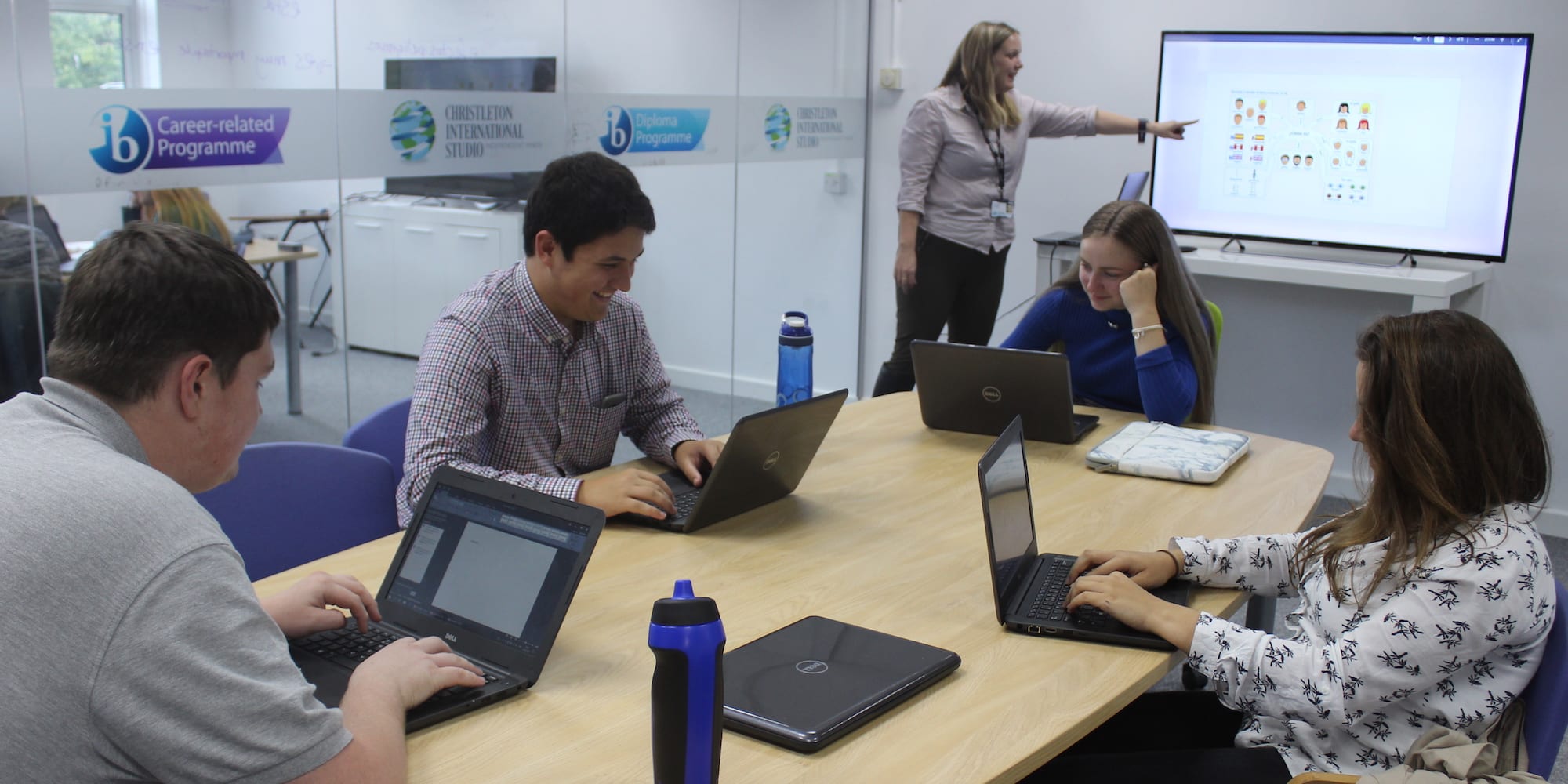
What is lean learning?
FEATURE – How does lean apply to learning? The author reflects on the lean transformation his schools are undergoing and on its practical implications on students, staff and leaders.
Words: Tony Lamberton, CEO, The Learning Trust - United Kingdom.
Look through the window at a learning or training session and that should be enough for you to decide whether or not you are spending your time on something valuable and worthwhile. (Hint: if you are being distracted by passing clouds or the birds chirping, the answer is probably ‘No’.)
Conventional wisdom asserts that skills are best developed through instruction, that knowledge is gained through teaching, and that problem-solving capabilities are cultivated through group work and coaching. All of these, however, treat the learner as the product rather than the customer, and are normally done in batches. Lean principles tell us that we should always avoid batches and “produce” to demand and customer pull. As we found out at The Learning Trust over the years, this argument applies to learning as much as it does to manufacturing.
Three years ago, I observed and categorized over 500 learning sessions in several schools and colleges in the space of three months. Based on the dynamic in the room, I quickly and simply formed an opinion on the different sessions. I then organized them in five categories:
- Great learning – the session left me with the impression that something special was occurring.
- Purposeful learning – in the session, learners showed attention, focus and a clear sense of purpose.
- A mixture of focus and inattention.
- Hard to decide (often when individual or silent work was underway).
- Poor atmosphere, no apparent structure to the session, or boredom/misconduct.
In the photo below, how would you rate the type of learning of these young people?

The idea behind this process was to supply simple metrics related to a specific moment in time, while accumulating them to get an idea of big-picture trends. The biggest fear I had was to see many examples of boredom, which is to learning and training what a chronic disease is to health – draining, numbing and a remover of hope and ambition. The acute problems I observed didn’t worry me too much – pull the Andon and work hard to permanently fix them, like lean teaches us. In general, I found safe learning between category 2 and 3 and then some inspirational and some dull learning. I was worried about the amount of time being spent on activities that required compliance and co-operation but seemed to add no value to learning. I saw huge opportunity in enabling the learners to provide customer feedback to create a virtuous circle of increased value add.
THE CUSTOMER IS THE PRODUCT
You might be familiar with the old joke: “What do you teach?” “I teach kids.” But as we think in terms of the impact our teaching has, a deeper discussion on product and customer is necessary. Part of our journey at The Learning Trust (which includes three schools near Chester, UK) was trying to define who the customer is – it’s for them that we are creating value – and our conclusion is that the child is both the product and the customer.
This insight has enabled increasingly radical improvement in our schools and workshops. Lean is a strategy pioneered by Toyota, and long familiar to engineers and manufacturers around the world. What we have found is that this more human and empowering approach to change can bring startling improvements to the way we train and educate children. In fact, lean is a strategy for learning.
In our initial work, generously supported by the Toyota team at the Deeside engine plant, we assumed that eliminating waste in the classroom would mean identifying redundant practices like registration, transition and start-up times – the parts of a lesson that are visibly not about learning. Getting learners involved as customers, however, transformed this view, because they have a very clear understanding of what value-adding learning is. In a recent lean experiment, students in our three schools were asked to time the parts of lessons in which they believed they were learning and then explain what made those activities effective. The results and insights were fascinating and they enabled teachers and leaders to design lost time out of their lessons and programs of study, focusing on what works for students and supplying that in a “pull” model with them being both the customer whose needs are to be met and the product – the very demonstration of those needs being met. The results of the experiments will be shared at the Global Learning Lean Summit in October.
PIONEERING EFFORTS
Chester International School – part of The Learning Trust – is the UK’s first lean school. We hope that the experiments we are running and the work we are doing will inspire more schools around the world to take on lean principles.
Practically speaking, however, what does a lean approach to learning mean to the different players involved?
To begin with, we find there is a need for transparency and openness. Learners know exactly where they are going and how they are supposed to get there. They also know that they have the means and the responsibility to catch up whenever they might have fallen behind for some reason. Part of this culture of openness is ensuring there are no nasty surprises: students and their parents are kept fully aware of progress and next steps throughout the year.
Greater openness is also required from staff because it will be up to them to carry out the changes, as the people closest to the work. The key to lean in learning or education, as elsewhere, is that people take ownership of their own work. It is theirs, and they are best placed to improve it.
Positive change starts with teams defining their own “value-added work”. Once a team has a clear idea of its contribution, it will be easier for them to identify redundant practices and inefficiencies. It is staff “buy-in” that embeds change and ensures that improvements are ratcheted up rather than slipping away when the eye of management moves on. This effect is especially powerful where teams themselves are empowered to decide how to allocate the savings they have made. Because lean thinking requires people to identify their own contribution to the value-creating work and design their own improvements around it, the result is not just the progressive elimination of waste but a fundamental cultural change throughout the learning environment.
A WORD OF CAUTION
What about leadership? There is still a very clear and important role for them in defining the objectives and pace of the improvement work, and the quality assurance process. A word of caution is necessary, however: if school leaders decide to embrace lean thinking, they need to commit fully to it and honor the methodology in its entirety. (A pick-and-mix approach won’t generate systemic and sustainable improvement.)
Lean learning is an approach that requires those at the top to share power in very significant ways. For example, a senior leader shouldn’t identify specific efficiencies and improvements, because this is up to the teams at the front line.
Lean is a unique approach to problem-solving, one that empowers staff with a sharper sense of the value of their contribution and a reinforced commitment to meeting the needs of students. It has the potential of changing the whole culture and mindset of a school. It has been shown to deliver remarkable and measurable benefits, from improved attainment in national examinations in mathematics to the saving of hundreds of staff hours from internal assessment processes.
THE AUTHOR

Read more


FEATURE – The application of lean management to education is not new, but we all know how hard changing legacy systems is. This greenfield lean school aims higher, trying to rethink learning altogether.


CASE STUDY – The Hospital de Bellvitge in Barcelona is relying heavily on hoshin and Kata to create a working environment based on collaboration and joint problem solving.


INTERVIEW – At the recent UK Lean Summit, Ian Hurst and Keith Edwards of the Toyota Lean Management Centre ran an insightful workshop on standard work. We sat down with them to discuss standardization, respect for people and waste elimination.


THE NAKED GEMBA – Our new series goes back to basics to unlock the secrets of the gemba and tell us about some of the main tools and techniques we can use in a lean transformation. First up, supermarkets.

